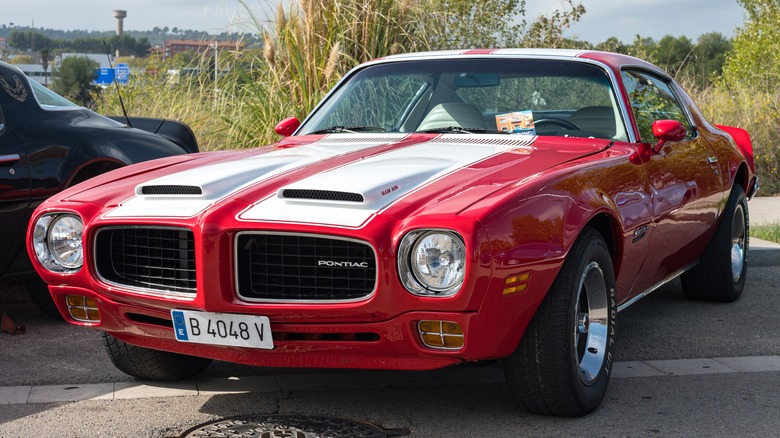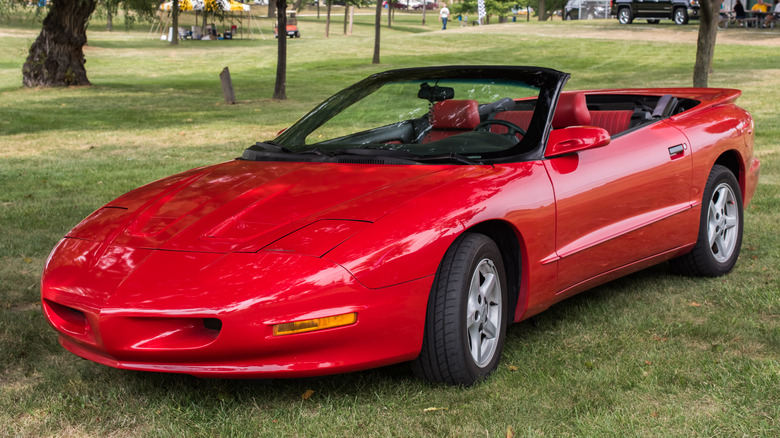What Makes A Pontiac Firebird A Formula, And How Is It Different From A Trans Am?
The Pontiac Firebird Formula is a trim level available on the Firebird from 1970 (initially called the Formula 400 at the second-generation Firebird's debut) through 1981 and 1987 through 2002, the final year for the iconic pony car. Throughout the life of this lesser-known but no less capable Firebird, the Formula became known as the more reserved sibling that had all the performance cred of the Trans Am, but without the flashy bodywork or a screaming chicken on the hood. The Formula looked like a lower-level Firebird, but it packed a V8 under the hood, sometimes a very powerful V8.
The 1970 Pontiac Firebird Formula, as probably only hardcore car fans know, replaced the Firebird 400 of the first generation, which explains why it began as the "Formula 400." The Firebird 400 was the top dog of the first-gen Firebird lineup — until the Trans Am came along in 1969. From then on, the relationship between the Firebird Formula and the Firebird Trans Am would continue.
One benefit that the original Firebird Formula had over the Trans Am was reduced weight. Without the additional body kit parts and luxury-related gear that most Trans Ams were equipped with, the Formula weighed about 100 pounds less, which appealed to enthusiasts looking for any advantage at the strip — or on the street. Aside from the external differences (the T/A's spoilers and the shaker hood scoop), the Pontiac Firebird Formula was very similar to the Trans Am underneath. A firmer suspension was standard, with the option of upgrading to the Trans Am's setup.
How is a Firebird Formula different from a Trans Am?
True to its name, the 1970 Formula 400 came standard with a 400 cubic-inch, 330-horsepower V8, while the optional 345-horsepower Ram Air III V8 engine (standard in the Trans Am) could also be specified. With this engine, the Formula 400's "nostril" hood scoops became functional, feeding fresh, cool air directly into the engine, just like the Trans Am's shaker scoop did.
Over the years, increasingly stringent emissions regulations and the switch to "net" horsepower ratings took a toll on the second-gen Firebirds. The 1977 Firebird Formula initially had a 301 cubic-inch V8 base engine with 135 horsepower, a far cry from its glory days only seven years earlier. The Formula's big brother, the 1977 Trans Am, came with a base V8 that had 400 cubic inches and 180 horsepower. As before, the Trans Am's standard engine was optional in the Formula.
The third-gen Firebird redesign (1982-92) brought lighter weight, smaller size, and improved aerodynamics to boost the car's overall performance. The Formula model was reintroduced for the 1987 model year with a 305 cubic-inch, 170-horsepower V8 standard. Again, the Trans Am's standard 305 cubic-inch V8 with 185 hp was optional.
The fourth-and-final generation (1993-2002) saw a return to high performance, additionally boosted by the 1998 introduction of the 305-hp LS1 V8, standard in both Formula and Trans Am. This increased to 320 horsepower with the 2001 WS6 package, making them both the quickest and fastest Firebirds ever.

